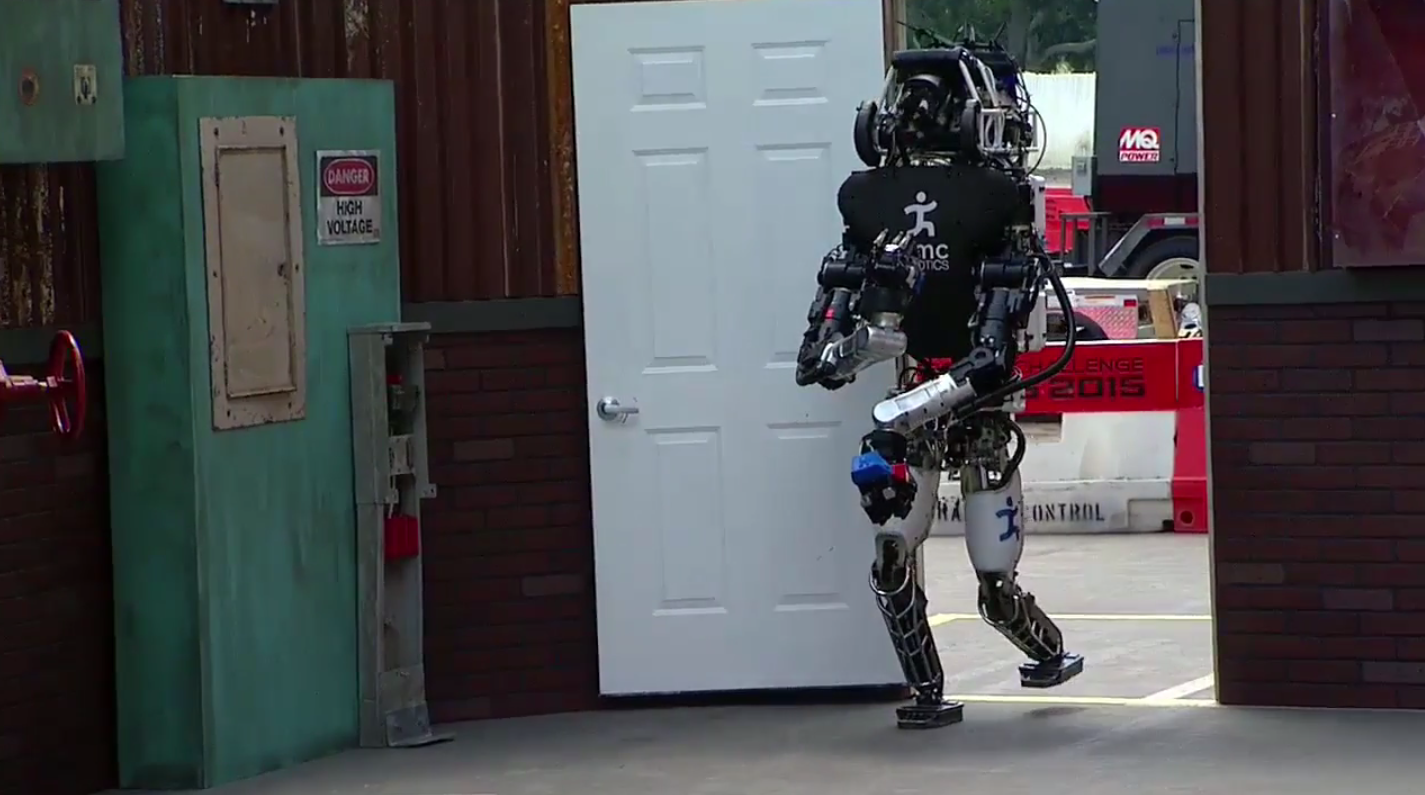Roughly five years after DARPA’s 2004 not-ready-for-prime-time driverless-car contest mercilessly dubbed the “Debacle in the Desert,” Google was testing autonomous vehicles on American streets and highways. The latest DARPA Robotics Challenge earlier this year, the one aimed at pushing humanoid rescue machines to new limits, was likewise far less than a complete success, though I doubt we’ll be bossing around tin butlers by 2020. However, progress will be made.
Even though opposable thumbs were a lovely development in the course of life on Earth, there’s some question as to whether we should be so concerned about humanoid-type robots. We didn’t create a “robot person” to handle the wheel of a driverless car and drones don’t flap wings like birds (nor do airplanes). There is something satisfyingly narcissistic about inanimate metal and plastic replicating familiar life forms–especially our own–but many of the needed maneuvers in Fukushima and flood zones could probably be accomplished by unfamiliar figures.
In a GQ article, Bucky McMahon looks back at DARPA’s June contest and looks ahead. An excerpt:
Southern California, June 2015
Here, now, on day one of the DARPA Robotics Challenge, the little humans in the crowd are the opposite of patient. Overstimulated, brainy children—future roboticists, perhaps—they half-pack the stands at the Los Angeles County fairgrounds, chanting “Go, robots, go!” as the first four competitors enter the open-air arena. In just a few short minutes, against a backdrop of rusty corrugated iron and dusty windows reminiscent of a 1950s sci-fi-movie set, the robots will navigate the course like giant praying mantises cast in community theater. Five Jumbotrons will offer fans close-ups and instant replays as the robots wrestle with various Mr. Fix-It tasks, clear debris, or walk on a jumble of concrete blocks. It’s a little like the Roman Colosseum, but with bizarre humanoid machines instead of gladiators, masterpieces of engineering that are still battling their own limitations as much as one another.
Twenty-three robotics teams from seven nations are here in Pomona, California, competing for $3.5 million in federally funded prize money dangled by DARPA. (Full name: the Defense Advanced Research Projects Agency.) Despite its buzz-cut reputation, the agency is putting on a pretty good show here at the DRC Finals. There’s a festival atmosphere, with a tech expo outside the stadium, under dozens of white tents. And though the purpose of the event is grim enough—to test robotic technology for emergency disaster relief at the Three Mile Islands, Chernobyls, and Fukushimas of the future—the competition format is kind of hilarious.
For each heat of the two-day comp, up to four robots at a time walk or drive vehicles from the racetrack oval toward the grandstand—a Futurama Shriners parade—arriving at four identical obstacle courses. You are invited to imagine that this is the scene of an industrial accident—a chemical spill, say, or toxic-gas leak—some terrible thing man has wrought that man ought not, something so bad we just can’t be there, not in person. But our metal friends? If they’re up to snuff, yes indeed. The final task is to climb a stairway, at the top of which is catastrophic doom’s off button, figuratively speaking.
For the robotics world, this is the greatest show on earth, and everybody’s here—all the best U.S. university robotics programs, industry reps, toy companies, even a would-be pirate with a robotic parrot named Polymer. You couldn’t swing a robotic cat—there are a few of those, too—without hitting a genius.•
Tags: Bucky McMahon

